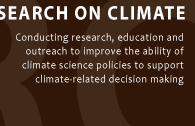WHO IS THIS GUIDE FOR?
We aim these ideas at anyone involved in the process of designing, directing, or implementing research -- those who decide what research gets done and whose needs the research is intended to serve. These ideas may be helpful to individuals and groups in a variety of different settings, including professionals in federal agencies, Congressional staffers, scientists managing a lab or sitting on a panel at the National Research Council, or managers at a foundation with a science focus.
INTRODUCTION
In 2010 the US federal government will have spent more than $150 billion on research and development. What gets done with that enormous sum has important implications for the wide variety of problems facing our society today and in the years to come. Important decisions on challenges like national defense, environmental change, rapid urbanization, and public health rely on scientific knowledge to inform them. Given the complexity and the significance of such challenges, how can science funders effectively orient a vast research enterprise to make real progress toward desired social goals?
This guide is about the challenge of producing usable science, which we define as science that meets the changing needs of decision makers. Producing usable science requires smart choices about the support for and management of science. We refer to the people making these choices as “science-policy decision makers.”
As anyone involved with federal research and development (R&D) knows, making choices about what science to do, and how to do it, is complicated. No single person or organization decides how to allocate resources to various research areas, and no single set of criteria can determine the best course of action. We cannot offer a simple explanation of how to navigate the complex politics of this process. However, the findings from our five-year, National Science Foundation-supported research program suggest some useful approaches to thinking about science management and science funding. We have condensed them in this short guide, along with some specific examples from across the federal government, in the hopes that science decision makers will find this an accessible and meaningful contribution to their work. |
 |
Our research has focused on the problem of reconciling the needs of potential science users (“demand”) with the “supply” of scientific information (more on these terms in Section 3). Through interviews, workshops, and analyses, we have examined the interactions between these two sides of the equation, and the ways in which people seek to reconcile them with varying degrees of success. The results have implications for the practice of science and for the management of science programs by federal agencies and other actors.
The fundamental conclusion of our work: Science best meets the needs of decision makers when those needs are considered throughout the institutions, policies, and processes that comprise the scientific enterprise.
Our fundamental recommendation: criteria for verifying the usability of scientific results, and specific accounts of the outcomes which R&D programs aim to fulfill, are crucial to managing science for decision making.
Our research has focused largely on climate change and other environmental research programs, but our conclusions and recommendations apply to a much greater cross-section of federal R&D. Indeed, we feel that engagement across this landscape is crucial to improving the usefulness of science. Facilitating this will be an important part of our own work as we move forward. |

